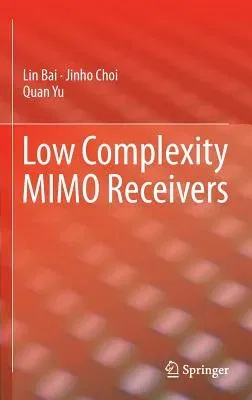Lin Bai
(Author)Low Complexity Mimo Receivers (2014)Hardcover - 2014, 31 March 2014

Qty
1
Turbo
Ships in 2 - 3 days
In Stock
Free Delivery
Cash on Delivery
15 Days
Free Returns
Secure Checkout

Print Length
296 pages
Language
English
Publisher
Springer
Date Published
31 Mar 2014
ISBN-10
3319049836
ISBN-13
9783319049830
Description
Product Details
Authors:
Book Edition:
2014
Book Format:
Hardcover
Country of Origin:
NL
Date Published:
31 March 2014
Dimensions:
23.39 x
15.6 x
1.91 cm
Genre:
Science/Technology Aspects
ISBN-10:
3319049836
ISBN-13:
9783319049830
Language:
English
Location:
Cham
Pages:
296
Publisher:
Weight:
630.49 gm